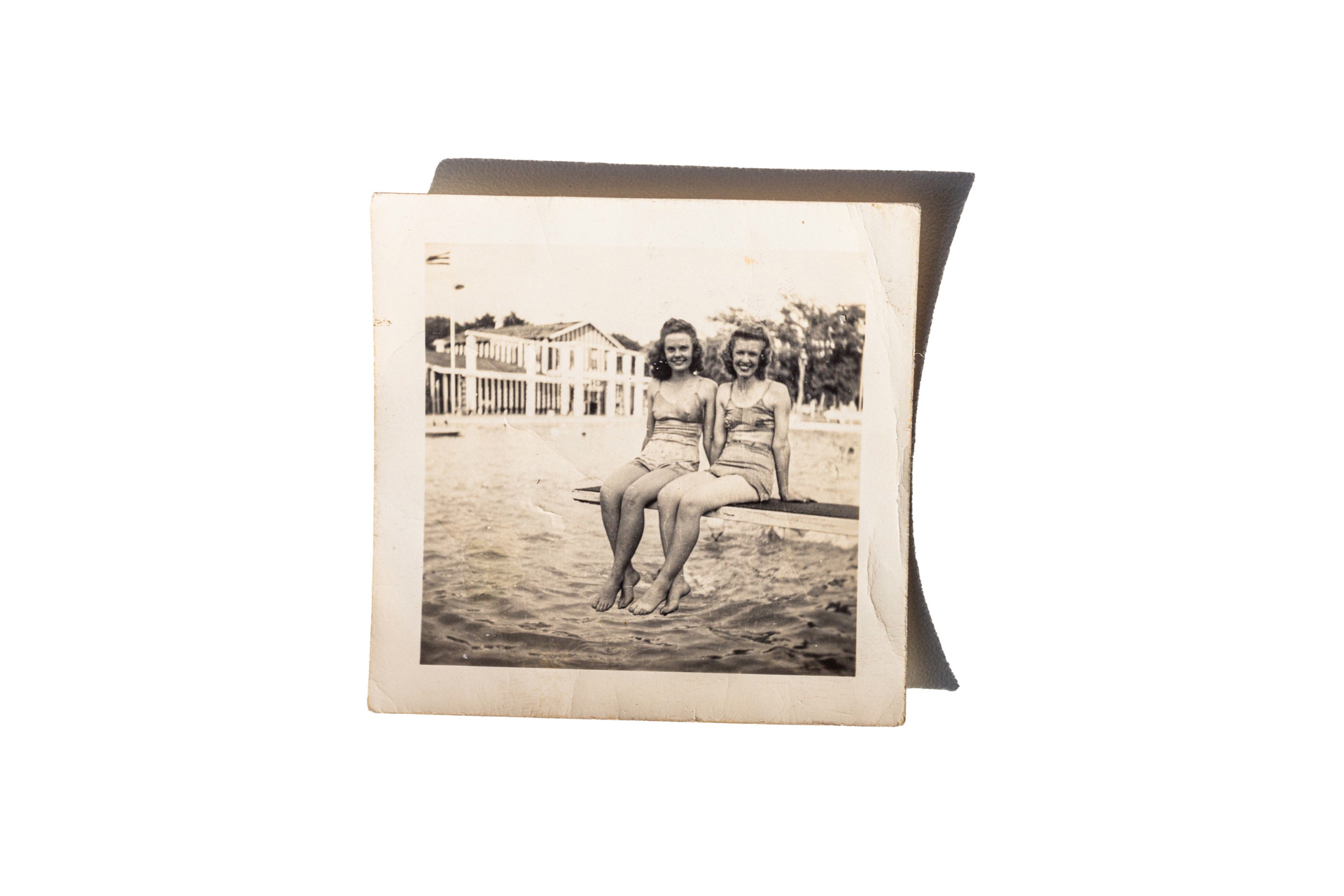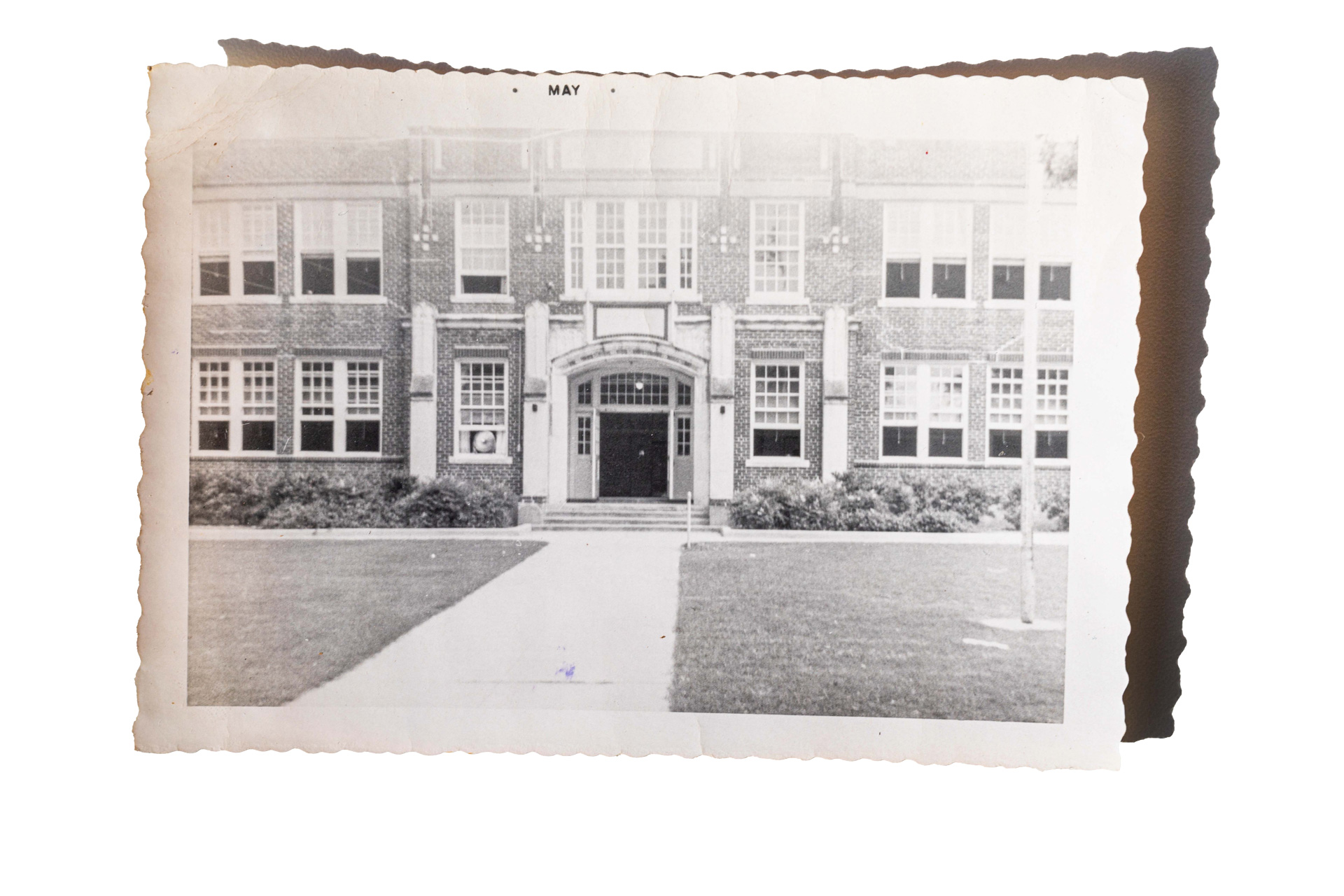
Jerry Holley stands outside of Henk’s European Deli & Black Forest Bakery in Dallas, Texas on Saturday, November 6, 2021. Holley grew up in the Vickery Meadows area as a teenager. Henk’s European Deli & Black Forest Bakery is one of the few buildings that has remained relatively the same over previous decades. Portrait by Emil Lippe
Jerry Holley, an antiques auctioneer at Dallas Auction Gallery, attended school and grew up near the northwest corner of Greenville Avenue and Walnut Hill Lane, where his grandmother owned a farm.
In the 1940s, the town of Vickery was an incorporated rural area north of Dallas including a few stores, a church and acres of farmland and woods sprinkled with single-family homes on large lots and roughly bounded by what are now North Central Expressway, Walnut Hill Lane, Royal Lane and Harry Moss Park.
“It was just open country,” Holley says. “And to me, you know, looking back on it, I always felt like it was kind of the best of both worlds.
“I mean, we lived out there kind of isolated from the big city, but we were close enough to the big cities and all the other things.”
Everyone knew everyone, and graduating classes were small. There wasn’t much crime, and children roamed freely and spent time as they pleased.
In 1945, the town of Vickery was annexed into the City of Dallas. Not much changed for Vickery-area residents until the 1970s, when a series of apartment complexes were built in the area to accommodate new residents as Dallas grew.
But the mainstay hangouts and roads that made Vickery a go-to spot for teens and families in the 1950s and ’60s remained.
The Teenage Dream

Spring and summer nights in Vickery were spent either playing roller hockey, swimming or camping at White Rock Creek or enjoying music and picnics at Vickery Park, Holley says.
“You go down the hill and over the creek, and there was Vickery Park,” Holley says. “It was huge. It claimed to have the biggest swimming pool in Texas. They would have music down there on weekends and dances and things like that.”
Vickery Park was located on Greenville Avenue and Pineland Drive. That area is now the American Heart Association, Northwest Community Center and Texas Health Cardiovascular.
Plumber Doug Saffel moved to the neighborhood as a child in 1949 with his family.
“They had a Ferris wheel, they had several rides,” Saffel says. “And in the front, they’d have an annual picnic at Vickery Park. There was a big swimming pool, but I don’t know when all of that went away.”
The swimming pool and park — an area located roughly at Greenville Avenue and Pineland Drive on 28 acres — was redeveloped in 1973 as apartments, according to a Dallas Morning News article. A portion of the site ultimately became headquarters for the American Heart Association.
Some other teen hot spots at the time were Deuback’s skating rink at 7800 Greenville Ave. near Harry Moss Park, a restaurant called Mr. Chicken on Shady Brook Lane (later moved to Greenville Avenue. at Milton) and White Rock Creek where they’d spend the nights swimming in the portion of White Rock Creek in Moss Park between Greenville Avenue and Walnut Hill Lane.
At Deuback’s, a family-owned spot that eventually burned to the ground, teens roller-skated and hosted championship roller-hockey teams.
Deuback’s was owned by John Deuback’s parents before he and his brother Victor took rink ownership in 1954.
“My mother grew up with that skating rink,” Holley says. “She used to go there when she was a kid. They went out of business, but you had that kind of basic entertainment around there.”
After School

Holley’s mother, Betty Brown, was a member of Vickery Meadows High School’s first graduating class in 1939. The school opened in 1938; seven years later, the school’s name was changed to Hillcrest High School.
At age 99, Brown still remembers life in Vickery Meadow. From Walnut Place Living Facility, she and Christine Holley, Jerry’s wife, reminisce about their time in the neighborhood, separated 30 years between 1939 and 1969.
Brown and the Holleys are Vickery Meadows/Hillcrest High alumni. There were other schools in the neighborhood, such as Vickery Grade School on Holly Hill Drive at Ridgecrest. which went up to 12th grade at one point, and Ben Franklin Junior High. But it was Hillcrest High School where Jerry and Christine met.
In the late 1960s to early 1970s, the couple began to notice the shift from small family homes and acres of vacant land to slowly being filled with apartment complexes.
Flipping through the pages of a Vickery Meadows Class of 1939 yearbook, John Deuback’s photo is one row above Brown’s photo on the same yearbook page. The two knew each other from nights spent at the skating rink.
“I was there every night,” Brown says, something of a skating whiz herself at the time. “(The Deubacks) had a place on the side where they’d sell root beer.”
Mr. Chicken, a chicken and burger restaurant, and Melody Lane were frequented for lunch and dinner and racing, respectively.
Melody Lane was a dark stretch of road in the woods between Park Lane and Shady Brook Lane. It’s now a residential area lined with apartments and runs past the Walmart and Sam’s Club on Retail Road. Thrill seekers who knew cars well enough to take them apart and reassemble them crowded the road, which was a well-known meeting spot for drag races.
“Well, Jerry had a ’57 Chevy, and it was the fastest car around,” Christine says. “And he could take it apart and put it back together. He and the other guys would go out there on Melody Lane, which is now all singles apartments.”
Meeting in person was a necessity if anyone wanted to socialize. Christine says the shared phones, or “party lines” at home, eliminated private or long conversations outside of school.
“So, roller skating rinks, church, fast-food parking lots, drive-in movie theaters and school were our social media,” she says.
Shopping Locally
Drive by Vickery Meadow today, and the shopping environment is different.
Former hot spots are now fast food and retail chains. Vickery Feed Store on Greenville Avenue and Park Lane is now a sandwich shop and Mr. Chicken, which is gone, was across from where Henk’s Black Forest Bakery is now. The number of drug stores and small grocery stores that once lined those streets of Greenville and Park Lane are now Vickery Park Library, The Shops at Park Lane and fast food and cultural restaurants.
“The only thing in Vickery that I still recognize is the church I was baptized in and the feed store that is now a Great Outdoors Sandwich shop,” Saffel says.
So what happened, and when did people start to move? The shift began when the first apartments took root. By this time, Jerry and Christine were in college. The younger people who remained during the 1960s wanted a taste of the big city and moved elsewhere.
“In a way that’s what happened there,” Jerry says. “You know, the kids in my generation, they started midway through college, moving off to other places.“





